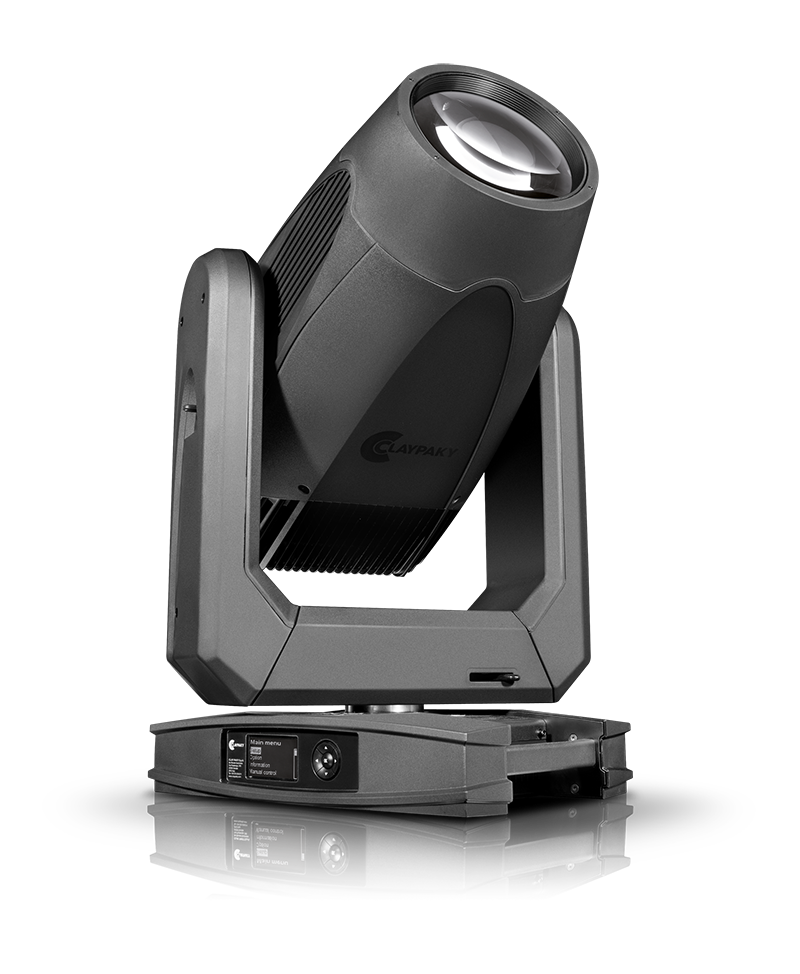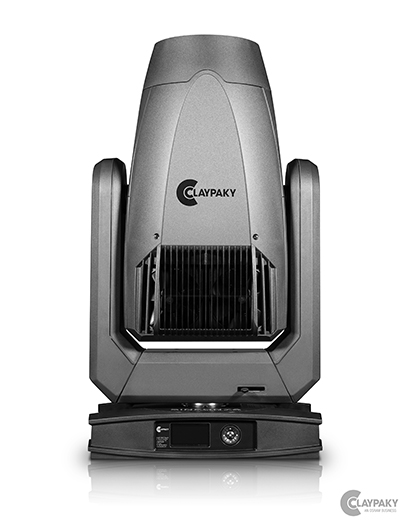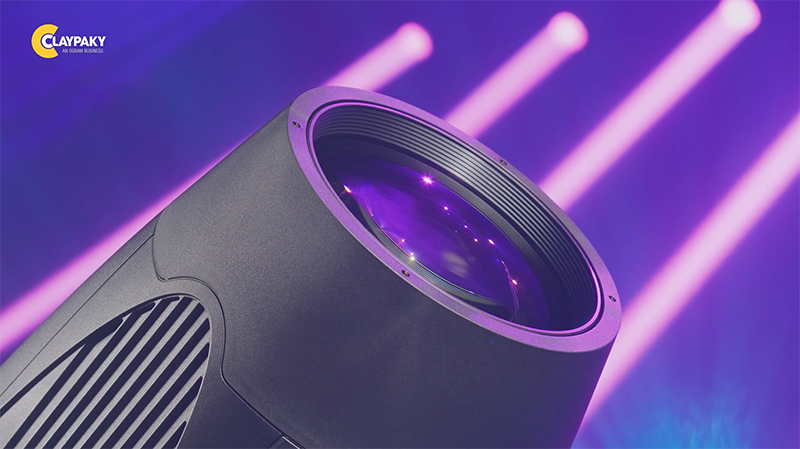
Author’s note: This article is written based on specifications and video footage; I have not physically seen the fixture. Further, as of the time of this writing, the user manual for this fixture is incomplete, so several aspects of features and fixture control are unable to be evaluated at this time. —CR
Theater environments present unique demands. Noise, of course, is an obvious one—actors are not always sound reinforced, relying on power and elocution to be heard in the cheap economy seats, so quiet fixtures are a must. Quality of light is equally or more important—theaters somewhat famously being holdouts on the LED revolution in favor of what they know works—and that has for many years meant “incandescent.” There are some signs this attitude is changing for the better, as we slowly relinquish our collective fixation on burning bits of tungsten for more efficacious, cost-effective, and less thermally punishing means of casting light. Manufacturers of automated lighting have seen the demand and have, in instances, delivered with fixtures meant to fulfill the twin obligations of silence and fidelity of color, but often by focusing on reducing output as a means of keeping fan noise to a minimum.

An All-New Fixture
Today, we’re looking at Claypaky’s new Sinfonya Profile 600, designed from the ground up for the specific needs of theatrical environments, and engineered specifically to achieve near-total silence while keeping all other effects high-quality.
The Sinfonya Profile 600 starts with a development that isn’t new in the lighting world generally but is a bit of a rarity in hard-edged fixtures—additive color mixing. Using a 600W RGBAL source, the Sinfonya’s color mixing is likely to be very high-quality. Claypaky’s specifications list 12,050 lumens of output in an integrating sphere. That the world of automated lighting would have gone the direction of subtractive mixing when we have colored LEDs is not something I would have predicted back in the day, but it’s neat to see manufacturers work with a system that provides so many advantages in terms of color. In addition to instantaneous color changes, color mixing with LEDs allows some really spectacular effects that would be difficult or impossible with a traditional moving-glass system. There is no fixed color wheel, but there is an included library of selectable colors. Dimming is 24-bit, with four user-selectable dimmer curves.
Color fidelity, as discussed, is incredibly important in theater settings, especially vis-à-vis LED sources. Metameric failure—when a material color appears different from the way the designer intended because of differences between light sources—has been a concern since the larger shift away from incandescent began. Light quality appears to be excellent: in a preset 3,200K, TM-30 Fidelity Index of 90, with a Gamut Index of 107, with a very slight oversaturation in the green and purple parts of the spectrum. Claypaky has included several methods to adjust the quality and tone of white light in particular: a dedicated CRI channel allows you to crossfade between maximum output and a calibrated white with a >95 CRI value, while there are additional channels for green / magenta tint settings and tunable whites for easily setting various color temperatures.
Near-Silent Operation
The standout feature here, is, of course, the near-silent operation, using Claypaky’s TONEDOWN™ technology. At full output, the fixture creates only 27db (SPL) of noise from one meter, which is about the noise levels found in a quiet rural area, a whisper, or leaves rustling. The design of the fixture removes the fan from the base of the unit entirely, leaving cooling fans in the head only. The user is able to select fan modes for different scenarios through DMX, a feature I appreciate. It is possible that other effects (zoom, pan, and tilt) create additional noise if moved quickly; the test protocols do not mention if the mechanical effects were included in the test.
Mechanical effects are housed on three removable modules farther up in the head. First in line is the gobo and animation effects module. This houses the fixture’s six rotating and indexable glass gobos, plus open. Gobos appear to mostly be optimized for texture projection onto scenery, in keeping with the Sinfonya’s focus on theatrical applications. A rotating and indexing stamped metal animation wheel is here as well, of a design we’ve seen in other Claypaky lights, for producing water, fire, and other organic-type effects. A 16-blade iris allows the operator to focus the beam down tightly. Claypaky has included two frost filters using a new system called LINEGUARD, which uses a pair of opposing frost flags that come in from either side of the beam, instead of a single flag that is inserted from one side of the beam. The footage of this system in action looks very good, with excellent evenness and elimination of visual artifacts on one side of the projected field as the flag is inserted. The two frosts are a light and heavy diffusion, but both appear to act more as contrast reducers, leaving the edges of gobos intact until fully inserted. The light frost in particular gives gobo edges a pleasingly soft edge, while the harder diffusion leaves no discernible gobo when inserted and appears to be intended to be more of a wash effect. Another nice touch here are the magnetic attachments for the light frost, making it easy for rental houses or theatrical workers to swap existing frost flags out for other options.
Second in line is the framing shutter system, which Claypaky calls ACCUFRAME. This has been totally redesigned and is now using four shutter blades mounted on two focal frames, instead of the more common four. Each blade can cover 100% of the beam on its own, with the help of some collision-avoidance software to keep the blades from slamming into each other. Claypaky claims 40% more precision in relation to their previous framing-shutter systems, especially critical when doing extremely tight shutter cuts over long distances. The entire shutter module can rotate ±45º in either direction. The fixture also boasts a four-facet rotating prism.
Farther up the optical train is the zoom and focus module with the moving lens elements. The zoom range is substantial, from 5˚ to 60˚. The front of the fixture features attachment points for accessories. Another standout feature here is the absolute pan and tilt positioning, where sensors in the head read the absolute position of the head at all times, instead of relying on a physical stop and calibrating relative to that position upon power up. When you need to reset a fixture, the head does not need to move or twirl, allowing the fixture to be placed into a much more physically compact space than one could otherwise. This is a fantastic feature to keep audience distraction to a minimum during dramatic moments where movement would be noticeable, or when placing the fixture into a space with tight physical tolerances.
The Sinfonya Profile 600 stands 31.34” tall, with a base 11.22” by 16.34”, and weighs 81.1lbs. Power input is via Neutrik powerCON TRUE1 ins and pass-throughs and receives data via 5-pin XLR ins and pass-throughs, an RJ-45 Ethernet in, or an optional wireless DMX system based on Lumen Radio. Fixture settings and personality can be set via the standard Claypaky menu system, or via RDM.

At a Glance:
A Unique Offering
The Sinfonya Profile 600 is a fascinating offering from a very highly regarded company in the moving light industry, and their first built from the ground-up to be targeted at the specific and demanding needs of the theatrical industry. Seeing profile lights with RGBAL engines is always exciting as the state-of-the-art advances, and the Sinfonya’s extremely quiet operation and absolute positioning features shine as star attractions for theaters of every size.
Claypaky Sinfonya Profile 600
Pros:
RGBAL color mixing, absolute positioning, very quiet
Cons:
When the robot uprising happens, we won’t hear them coming
SPECS
- Light Source: 600W RGBAL LED Engine
- Output of Fixture: 12,050 Lumens (in integrating sphere)
- TM-30: Rf: 90; Rg: 107 (3,200K)
- CRI: >95 Calibrated White
- Zoom Range: 5˚ to 60˚
- Iris: 16-Blade
- Color Mixing: Additive Color Mixing
- Color Wheel: N/A
- Color Temperature Range: 2,500K to 8,500K virtual CTO
- Gobo: 6 Glass Rotating & Indexed + Open
- Animation: Rotating &
Indexed Stamped Metal - Frost: Two Frost Flags (LINEGUARD)
- Prism: Four Facet Rotating
- Framing System: 4 Blades in 2 Focal Frames (ACCUFRAME)
- Maximum Power Consumption: 770VA
- IP Rating: IP20
- Dimensions: 31.34” tall, with a base 11.22” x 16.34”
- Weight: 81.1 lbs.
- MSRP: Contact Clapaky dealer
Manufacturer: Claypaky
More Info: www.claypaky.it


